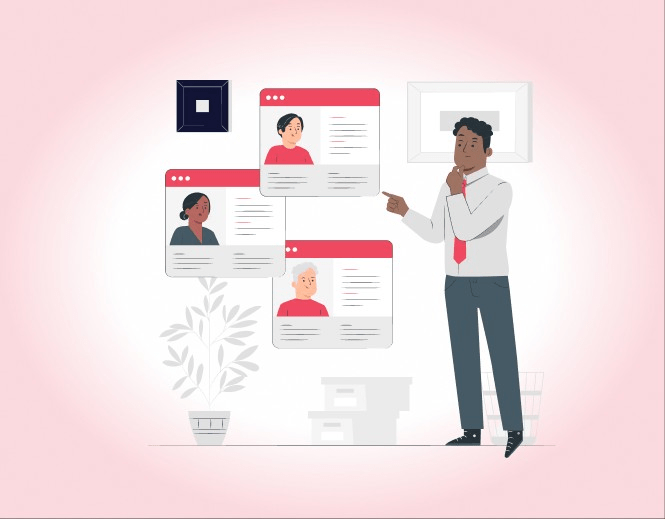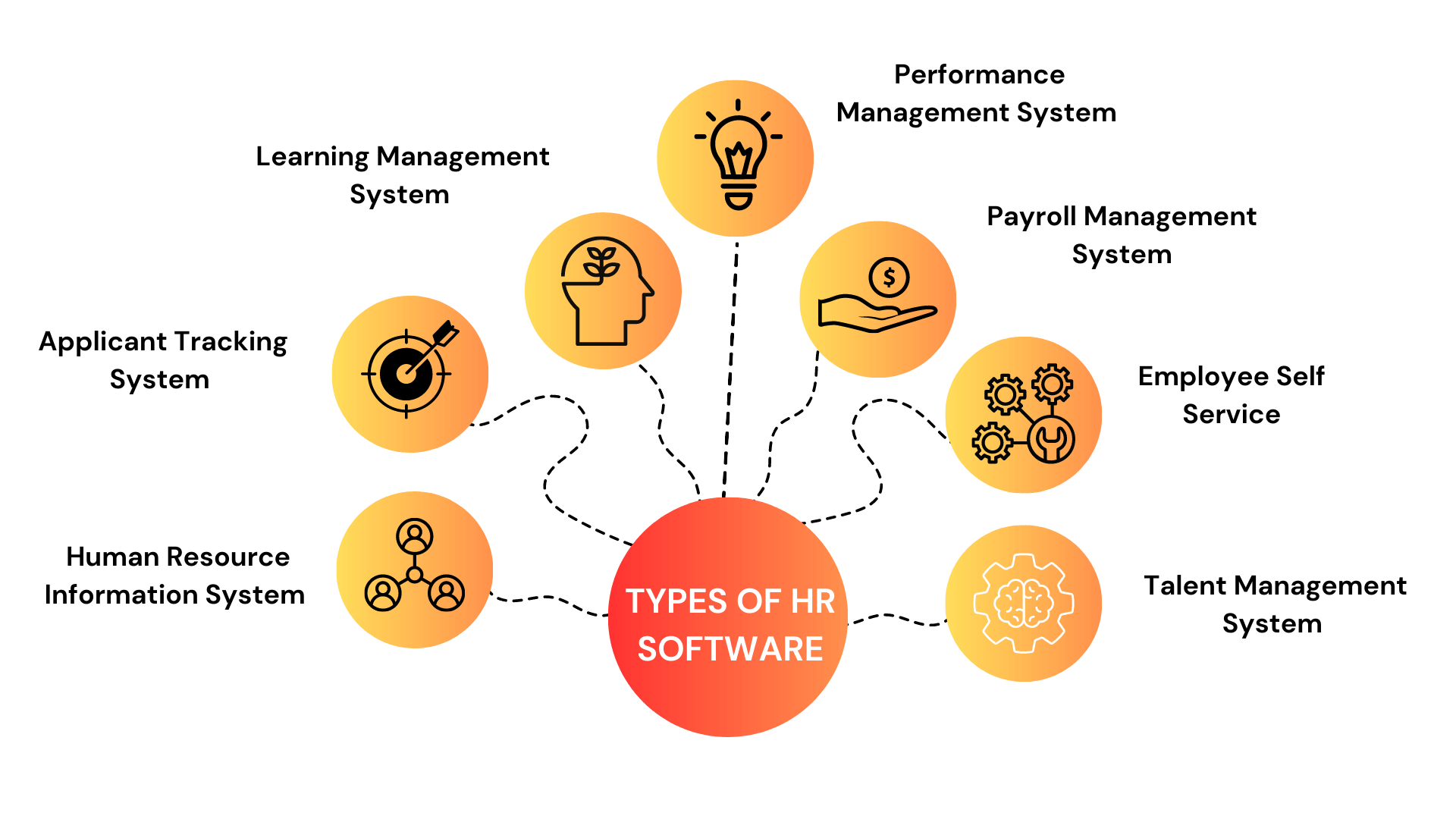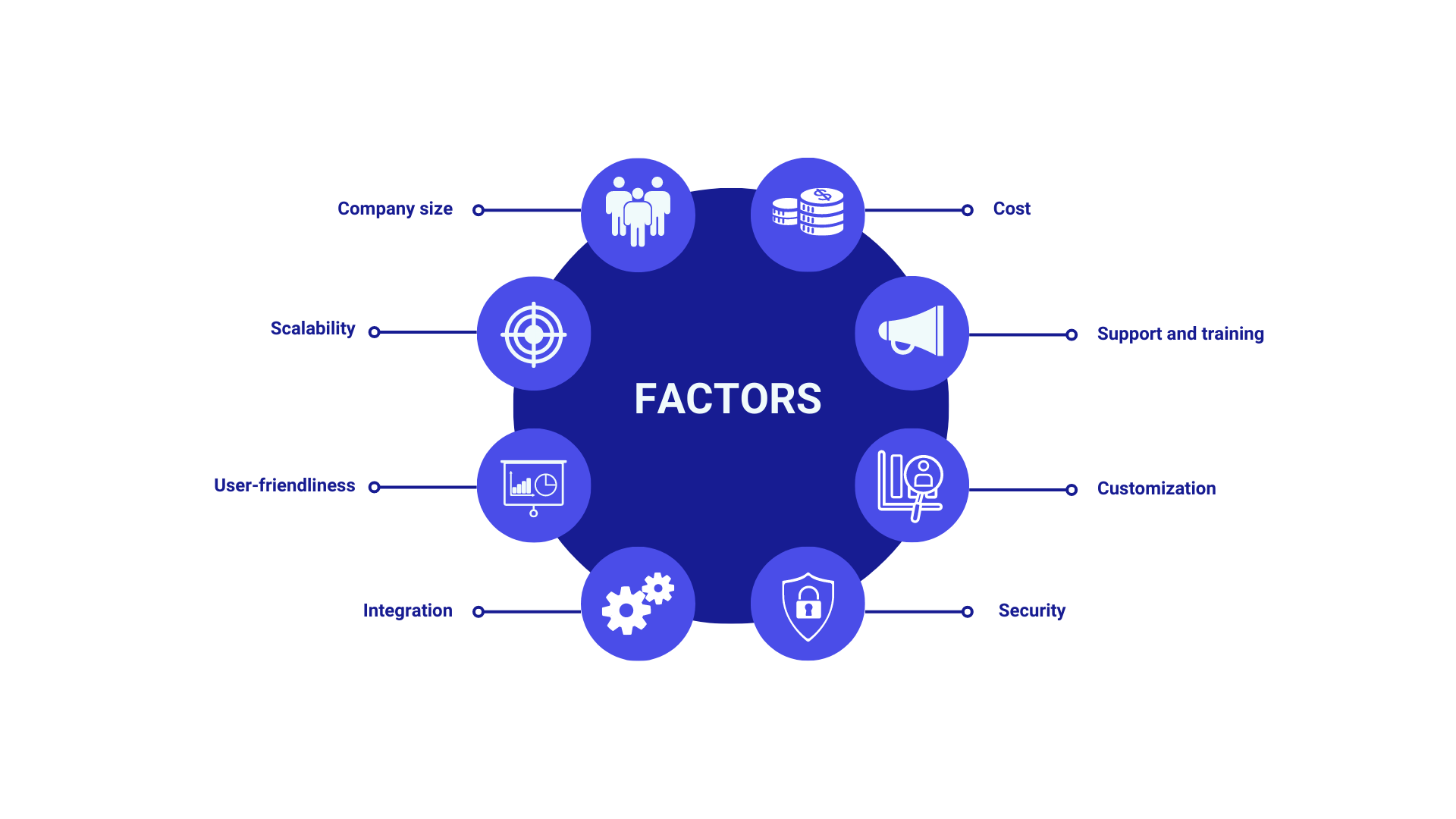
Home »
How KEBS Can Help Your HR Management Become More Efficient?
Unlock the potential of efficient HR management with KEBS. Explore tools that elevate your HR practices.
Overview of HR management software
HR management software is a tool that helps businesses manage their employees more efficiently. It does this by combining many different functions into one system.
The HR management software helps businesses with a lot of things. It helps them find new employees and keep track of who’s coming to work and how well they’re doing. By using this software, businesses can save time and work more effectively when it comes to managing their workforce.
HR management software automates many routine HR tasks, reduces manual workload, and helps HR professionals manage their daily responsibilities more efficiently. It also helps to improve data accuracy, availability, and security, making it easier to track and analyze employee data.
Moreover, HR management software provides insights into workforce analytics, which can help organizations make better decisions based on data-driven insights. This can be beneficial for workforce planning, identifying skill gaps, improving employee engagement, and identifying areas for improvement in HR processes.
The HR management software is very important for businesses that want to work better. It helps to save money and make things easier for managing employees.
HR management software is designed to automate many of the routine HR tasks and streamline HR processes to improve workforce management. It is mainly used for:
- Recruitment: The HR management software helps businesses find and hire new people. It can help create job ads, look through resumes, interview candidates, and offer them jobs. This makes the hiring process easier and more organized.
- Onboarding: The software can automate the new hire paperwork, orientation training, and providing new staff with the appropriate tools and resources.
- Time and Attendance: The HR management software keeps track of when employees are working and when they’re not. It can also keep track of things like vacation time and other time off. This makes it easier to create work schedules and pay employees accurately.
- Performance Management: The software can be used to track employee performance metrics, set goals, and conduct performance evaluations.
- Benefits Administration: HR management software can help manage employee benefits programs, including health insurance, retirement plans, and other employee perks.
- Compliance Management: The HR management software can help businesses make sure they are following the rules and laws related to HR. This includes things like labor laws and data privacy regulations.

Roles and responsibilities of a HR managers
The role of Human Resources (HR) Manager involves overseeing and managing all aspects of an company’s human resource functions. Some of the key roles and responsibilities of a human resource department manager include:
- They develop strategies to find and attract talented people, interview candidates, and make hiring decisions.
- They design and implement programs to help employees improve their skills and knowledge.
- They create and manage programs to make sure employees are meeting organizational goals and objectives.
- They oversee things like salaries, bonuses, health insurance, retirement plans, and other perks that employees receive.
- They manage disputes and grievances between employees, and take action if an employee breaks the rules.
- They need to make sure that the organization is following labor laws and data privacy regulations.
- HR managers help companies prepare for the future by determining their staffing needs, keeping employees satisfied, and fostering professional growth.
| Key Roles and Responsibilities | Description |
|---|---|
| Talent Acquisition | Develop strategies to find and attract talented individuals, conduct interviews, and make hiring decisions. |
| Learning and Development | Design and implement programs to enhance employee skills and knowledge. |
| Performance Management | Create and manage programs to ensure employees meet organizational goals and objectives. |
| Compensation and Benefits | Oversee salary structures, bonuses, health insurance, retirement plans, and other employee perks. |
| Employee Relations | Manage disputes, grievances, and enforce disciplinary actions when necessary. |
| Legal Compliance | Ensure compliance with labor laws and data privacy regulations. |
| Workforce Planning | Assess staffing needs, keep employees satisfied, and promote professional growth for future readiness. |

Importance of HR management software
HR management software is an essential tool for organizations to manage their human resources effectively. Here are some reasons why HR management software is important:
- Streamlining HR Processes: HR management software automates routine HR tasks such as employee data management, attendance tracking, and leave management. This saves time and effort for HR professionals and allows them to focus on more strategic initiatives.
- Centralizing Employee Data: HR management software allows HR professionals to store all employee data in a centralized database. This makes it easier to access employee information, track employee performance, and monitor HR metrics.
- Improving Compliance: HR management software helps organizations comply with regulatory requirements by automating compliance-related tasks such as reporting and documentation.
Benefits of HR Management Software
HR management software provides numerous benefits to organizations of all sizes. Here are some of the key benefits of using HR management software:
- HR management software can helps employees to access their HR data, including information about their benefits and leave balances. This improves transparency and empowers employees to take ownership of their HR needs.
- It helps organizations become more efficient by reducing manual data entry, automating daily tasks, and improving communication between HR and employees.
- HR management software provides HR professionals with tools to manage the entire employee lifecycle, from recruitment to retirement. This includes applicant tracking, performance management, succession planning, and more.
| Benefits of HR Management Software | How It Helps |
|---|---|
| Employee Data Accessibility | Allows employees to access HR data, benefits, and leave balances, promoting transparency and empowering employees. |
| Efficiency Enhancement | Reduces manual data entry, automates tasks, and enhances communication between HR and employees, leading to increased efficiency. |
| Full Employee Lifecycle Management | Equips HR professionals with tools for managing the entire employee lifecycle, from recruitment to retirement, including applicant tracking, performance management, and succession planning. |

Types of HR Management Software
There are different types of HR management software available. Here are some of the most common types of HR management software:
- Human Resource Information System (HRIS): It offers an integrated system for storing and managing employee data, including employee profiles, performance reviews.
- Applicant Tracking System (ATS): ATS software helps streamline the recruitment process by managing job postings, resumes, and candidate information. It can also automate candidate screening and tracking, and facilitate communication between recruiters and candidates.
- Learning Management System (LMS): LMS software provides a platform for delivering and managing employee training and development programs. It can track employee progress, manage course schedules, and provide reports on training outcomes.
- Performance Management System (PMS): PMS software helps manage employee performance by setting goals, tracking progress, and providing feedback. It can also automate performance review processes and provide performance data to help inform decision-making.
- Payroll Management System: Payroll management software automates the calculation and processing of employee pay, taxes, and benefits. It can also generate pay stubs and provide financial reports.
- Employee Self-Service (ESS): It provides employees with access to people related information and services, such as leave requests and benefits. This can help improve employee engagement and satisfaction.
- Talent Management System (TMS): TMS software provides a comprehensive platform for managing the entire employee lifecycle, from recruitment to retirement. It includes features such as applicant tracking, onboarding, performance management, and succession planning.
Key features and capabilities of HR management software
HR management software comes with a variety of features and capabilities that can help automate and streamline HR processes. Some key features include:
- Employee information management: The software makes it easy to maintain important employee details like personal information, work history, and benefits.
- Payroll management: HR software can help accurately calculate and process employee payroll on time and includes the compensation and benefits.
- Recruitment and on boarding: HR software can help with recruitment and onboarding by managing job postings, resumes, and applicant tracking. It can also automate new-hire paperwork and streamline the onboarding process.
- Performance management: HR software can help track and manage employee performance through goal setting, performance reviews, and feedback.
- Benefits management: HR software can help manage employee benefits, such as health insurance, retirement plans, and paid time off.

Key features and capabilities of HR management software
Factors to consider when choosing an HR management software solution
When choosing an HR management software solution, it is important to consider the following factors:
- Company size: The size of the company will determine the complexity of the HR management software needed. Smaller companies may only require basic features, while larger companies will need more advanced features and capabilities.
- Agility: It is important to choose an HR management software solution that can grow with the company. This means considering the potential for future expansion and whether the software can accommodate that growth.
- Ease to use: The software must be easy to use for both HR and employees, with a simple and intuitive interface.
- Integration: The software should be able to integrate with other systems already in use, such as payroll or accounting software.
- Security: The HR management software should have strong security features to protect sensitive employee data.
- Configuration: The software should be adaptable to fit the company’s specific needs, and should allow for the addition of special features.
- Support and training: The software vendor should provide adequate support and training to ensure successful implementation and use of the software.
- Cost: The cost of the software should be compared with its features to ensure it is a good value for money.

Best practices for using HR management software effectively
Here are some best practices for using HR management software effectively:
Clearly define the objectives: Before implementing HR management software, define the goals and objectives that the software is expected to achieve. This will help to ensure that the software is used to its fullest potential.
- Train employees: Adequate training should be provided to employees on the features and capabilities of the HR management software. This will help to ensure that they use the software effectively and efficiently.
Streamline processes: HR management software can automate and streamline many HR processes. Identify the processes that can be automated, and configure the software to do so. This will reduce the workload on HR staff and improve efficiency.
Regularly update and maintain data: The software should be regularly updated with the latest employee data. This will ensure that the information is accurate and up-to-date.
Encourage employee self-service: Many HR management software solutions offer employee self-service capabilities. Encourage employees to use these features to update their own information and perform routine tasks, such as submitting leave requests.
Tracking the data: Use this to track and study data, creating reports to understand HR process and determine areas for improvements
Ensure data security: HR management software often contains sensitive employee data. Ensure that the software has strong security features to protect this data.
Constantly evaluate and optimize: Constantly evaluate the performance of the HR management software and make improvements as necessary.
Discussion of common challenges faced by HR managers
HR managers face numerous challenges in their roles, including:
- Attracting and retaining talent: HR managers are responsible for attracting and retaining the best talent for their organization. This can be challenging in a competitive job market where skilled candidates are in high demand.
- Labor law compliance: Managers are responsible for ensuring that their company meets with all relevant labor laws and regulations.
- Managing employee relations: This can involve handling complaints, resolving conflicts, and addressing performance issues.
- Data management: HR managers must manage large amounts of data related to employee records, payroll, benefits, and performance metrics. This requires strong organizational skills and the ability to maintain accurate and up-to-date records.
- Managing remote and global workforces: HR managers need to be prepared to handle staff members across various regions and time zone. In order to efficiently communicate and interact with team members who are working from various places, technology may be used.
How KEBS people management helps to address the challenges?
| KEBS People Management Solutions | How KEBS Helps |
|---|---|
| Employee Onboarding | Make onboarding fast, efficient, and paperless with KEBS, simplifying the process for new employees. |
| Travel Management | Create detailed and budget-friendly travel plans for employees with KEBS to streamline travel management. |
| Performance Management System | Easily set precise goals, align objectives, and evaluate employee performance with KEBS. |
| Learning & Development | Upskill employees and unlock their potential with KEBS’s comprehensive Learning & Development program. |
| Recruitment (ATS) | Simplify talent scouting and recruitment with KEBS’s Applicant Tracking System (ATS). |
| Expense Claims & Advance Process | Automate expense claims and advance processes for a hassle-free experience for both employees and employers. |
| Timesheet | Efficiently manage employee time off requests with KEBS’s leave tracker and approver. |
| Payroll Management | Automate payroll calculations, generate payslips, and maintain employee records with KEBS’s payroll management system. |
| Resource Management | Optimize resource allocation, task scheduling, progress monitoring, and issue resolution with KEBS’s resource management tools. |
| Leave Application | Simplify leave requests and approvals with an |
KEBS People Management offers a comprehensive solution to help HR managers address the challenges they face. Here are some examples:
Employee Onboarding
Employee onboarding can be a time-consuming and complicated process, but with KEBS, it’s a breeze. Our software is designed to make onboarding fast, efficient, and paperless, so you can welcome new employees with ease.
Travel management
Managing employee travel can be a time-consuming task, but with KEBS, it’s made easy. KEBS enables you to create detailed and budget-friendly travel plans for your employees that will help them travel more efficiently.
Performance Management System
Setting clear goals and aligning the objectives of your organization with your resources is essential to achieving success. With KEBS, you can easily set precise goals and align them with the objectives of your organization.
KEBS helps you evaluate employee performance and identify areas for improvement, which can lead to better alignment.
Learning & Development
Learning & Development is an essential aspect of any organization that aims to maximize the potential of its employees. KEBS provides a comprehensive Learning & Development program that allows you to upskill your employees and unlock their full potential.
Recruitment (ATS)
Recruiting the right talent for your organization can be a time-consuming and challenging task. With KEBS Recruitment (ATS), you can easily scout for the best talents without breaking a sweat.
Expense claims & advance process
Managing expense claims and advances can be a time-consuming and challenging task. However, with an automated system, you can streamline the process and avoid delays or errors. An automated claim reimbursement process saves time and energy, ensuring a hassle-free experience for both employees and employers.
Timesheet
A timesheet is an efficient tool that replaces excessive paperwork and manual tracking of employee time off requests. Using KEBS leave tracker and approver, employees can easily request time off and managers can quickly approve or deny those requests.
Payroll management
Automating the payroll process ensures timely and accurate salary payouts to employees. With a payroll management system in place, organizations can easily calculate salaries, taxes, and other deductions. The system can also generate payslips and maintain employee records. By automating this process, companies can save time and reduce errors that can occur with manual calculations.
- Resource management – It involves managing and allocating the resources of an organization, such as employees, and materials, to ensure maximum productivity and efficiency. This includes tracking resource availability, scheduling and assigning tasks, monitoring progress, and identifying and addressing any potential issues
- Leave Application – Leave application process can be time-consuming and confusing, but with an automated system, it can be simplified. With an easy-to-use platform, employees can submit their leave requests, and managers can approve or decline them instantly. This not only saves time but also ensures that there is clear communication between employees and management regarding their leave status.
- Employee 360 – Employee 360 provides an easy and convenient way to access all the information about your employees in one place. With just a click, you can retrieve A-Z employee data and get a comprehensive database of all your resources. This can help you make informed decisions about performance, compensation, and other aspects of human resources management.

Benefits of using KEBS for people management
KEBS people management tool offers several benefits, including:
- Increased Efficiency: KEBS automates several HR tasks, including employee onboarding, performance management, and expense claims, among others. This reduces the workload of HR managers and improves overall efficiency.
- Improved Employee Experience: KEBS makes HR services, such as leave applications, travel management, and expense claims, easily accessible to employees. This enhances the satisfaction and experience of the workforce.
- Cost Savings: KEBS eliminates the need for manual data entry, paperwork, and other administrative tasks, reducing working costs for the organization.
- Adjustable: KEBS can be customized to meet the unique needs of an organization, ensuring that it addresses specific HR challenges.
Overall, using KEBS for people management can help organizations streamline HR operations, improve employee experience, and drive business growth.

Conclusion
KEBS is an all-in-one PSA software that can help your HR management become more efficient and effective.
If you’re looking to improve your HR management, KEBS can be an excellent solution. KEBS is a software that can help make managing your company’s HR easier and more efficient. One of the best things about KEBS is that it offers a complete HR solution.
You can automate a number of procedures with KEBS as well, which helps improve workflow efficiency and HR management. KEBS is the right solution for your company if you’re requiring for a means to enhance HR management inside your business
KEBS is a software that can help HR managers simplify and automate various tasks, resulting in a more streamlined workflow. It offers a range of features that can help HR managers in managing employee data, including time-off requests, performance metrics.
How to take your organization to next level! By KEBS!









